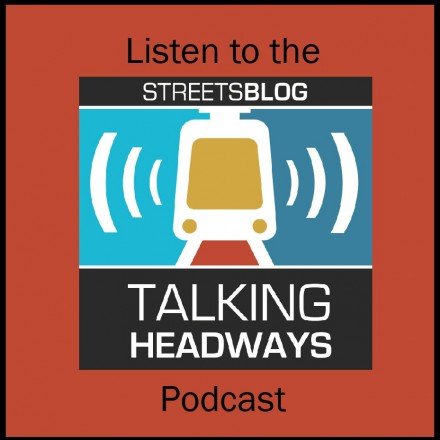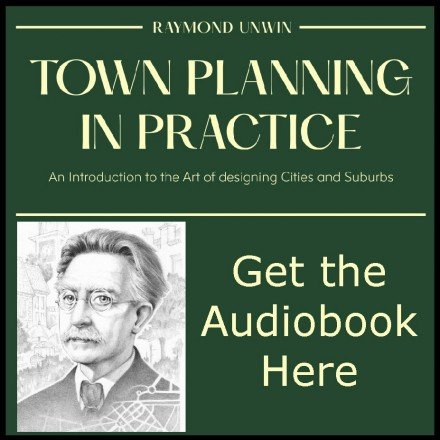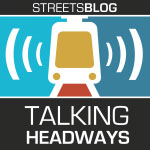(Unedited) Podcast Transcript 423: A County Voice for Transit
This week on the podcast we are back at the Rail~Volution conference in Miami last fall. We chat with Miami Dade County Commissioner Eileen Higgins about the South Dade Busway, the importance of FTA ratings in getting projects built, and why she thinks it’s important as an elected official to ride transit.
You can find this episode at Streetsblog USA or on our hosting site.
Below is a full unedited AI generated transcript of the show:
Jeff Wood (42s):
Well, commissioner Higgins, it’s so great to be able to speak with you. You know, one of the first things I usually ask people on my podcast is like how they came to transportation. Like what is it that actually got you interested in the subject? Was it something like riding the train when you were a kid or was it something that you came to when you were old?
Commissioner Higgins (1m 27s):
I grew up in Albuquerque, New Mexico, which as you might imagine, is not exactly a heavy rail kind of subway sort of town. And so it was all car centered. But my parents had grown up in the Bronx and so every time we would go visit my grandmother, it was just perfectly normal that you could be this little child and you could be on the subway and it was perfectly fine, or hop on the bus and go across town. So I definitely, even as a young person, learned about transit, but quite frankly, I became a transit person as a grownup. I ended up living in places where having a car is ridiculous, right? It’s too expensive. You can’t afford the insurance, you can’t pay to park. And so whether that was Washington dc, New York City, Mexico City and others, I just became used to riding transit and then I moved to Miami and I just kept riding transit.
Commissioner Higgins (2m 18s):
And you know, it’s not the most convenient thing in the world. Like I’m not gonna tell you we have the best transit system in the world because we don’t, but we plan to because we’re gonna build it. We’ve got a number of, you know, five extensions including the one we’re gonna spend a lot of time talking about today, the south corridor under construction. But I ride transit for a couple reasons. One, I feel like it connects me to place when I’m in a car. I pay attention to nothing except not killing people, right? Like, do you know what I mean? I emerge stressed and miserable because fundamentally there is nowhere you can go in our county where you’re not in a traffic jam, right? So driving is never pleasant, it’s always horrible.
Commissioner Higgins (3m 0s):
So these people that go, oh, you know, why would you take the bus? I’m like, well, you’re miserable and I’m not miserable. So what? What do you mean I have my monthly pass? It costs me virtually nothing I read, I call my mom, I do whatever I want. Now on some of our new vehicles, we have free wifi, I can even work. So that’s actually a downgrade in my quality of life. But transit is a much better way of living as long as it can get you where you want to go. And as a result of kind of my being an experiential rider here, I ran for the county commission because I didn’t see any, there was literally no one on the county commission that had ever been on one of our buses, right?
Commissioner Higgins (3m 40s):
They just had no idea what was going on. And very few of them ever got on the train system. And I thought, well, I’m not a transit person. Like you all people are experts, right? Who? Who’s here a transit engineer or a traffic engineer? Well, I’m not, I’m just a person who rides a bus and the train. But I knew I couldn’t be worse at transportation policy than people that don’t ride public transportation. And I just made it a mission to become a subject matter expert. And I’m still not as good as many of you in this room, but I’m getting close to where, you know, I can testify in front of Congress and I can make sure we get the money we need to expand these things because transportation is so important.
Commissioner Higgins (4m 21s):
What I always talk about is there’s three basic things. It’s kind of like my Maslow’s hierarchy of needs. Except there’s too many bloody things in that pyramid. There’s three things that matter fundamentally to our families, right? One is, can they afford where they live? What’s going on with the price of housing? Two, transportation, huge, huge cost burden, right? Five, 600 bucks a month. If you need a car with insurance, we have outrageous insurance rates here. So can you afford to live where you are? Can you get where you need to go? And then do you make a decent living? Do you have a job that pays you decent wages with decent benefits? And I believe if we improve any one of these three things, we are fundamentally improving people’s quality of life.
Commissioner Higgins (5m 7s):
So transportation matters dramatically, particularly low income families. Our bus system here, 70% of our transit rider are on the bus, right? So who’s here ridden our little metro mover while you’ve been here? Okay, so see, it’s fun, it’s cute, but you ride our buses, you know, you go out and you ride the 11 bus, everybody on that bus is a working person that probably has a service sector job that probably pays them less than $20 an hour. They literally can’t afford a car, they can’t afford parking. So for me, it’s just this passion point that I believe transportation lifts people outta poverty.
Commissioner Higgins (5m 47s):
And so I work on it.
Jeff Wood (5m 49s):
I mean, I think it’s rare for public officials to ride transit unfortunately. And so I’m wondering how that helps you and your discussions when you’re talking about policy with some of your, your other commissioners or you know, other government officials.
Commissioner Higgins (6m 0s):
First of all, I know the system. Sometimes I even ride routes that I normally wouldn’t ride just because I wanna have eyes on the system. So it’s not just enabling me to speak more cogently about it with my fellow elected commissioners. Quite frankly, I hope there’s no one from the Department of Transportation and Public Works in the room. See, okay, we see, you know, where I’m going with this, that Marie knows I can keep my eyes on the department, right? They can’t get away with anything because I know what’s going on. Like I know if the metro mover isn’t having the reliability that it’s getting and that enables me to ask for solutions.
Commissioner Higgins (6m 41s):
And then also, quite frankly, like our metro mover system, which you all wrote. Did you like it? Okay, great. It breaks down a lot because it’s a little old. We have a control system that’s more than 40 years old. It’s kind of like knob twisting binary, you know? And so we are spending over 150 million to upgrade that control system, which is a great project. It’s like open heart surgery really on the, you gotta lift our baby cars off the tracks and you know, open the tracks up and open our cars up. But that’s gonna improve reliability. And I’m able to better advocate for that because I actually ride the mover and I’ve been delayed because of the mover bright line.
Commissioner Higgins (7m 25s):
So it, it helps both ways. It helps watch over what the department’s doing and it helps me better advocate for change.
Jeff Wood (7m 32s):
So let’s talk about the South dead bus way. It’s 20 mile line with 14 stations and expected to be opened in 2024. Where did the idea for the line come from And can you tell us a little bit about the area that it runs through?
Commissioner Higgins (7m 43s):
Yeah, well lemme start with place. Miami County is big, it’s ginormous geographically. We’re actually larger than two states. To give you kind of a sense of scale, the southernmost town in our county is Florida City. The residents of Florida City, 40% of them live in poverty. It’s our poorest town, but it’s also 40 miles away from where we are now, which is where most of the jobs are. So those folks right now have bus service. It’s their only way to kind of begin to connect to the metro rail system. And if you get up and you leave your home in Florida City, you arrive downtown two hours later one way.
Commissioner Higgins (8m 29s):
So the lack of transportation is literally keeping an entire town in poverty, right? And then we go a little further north of smidge closer. Right now you probably cut 15 minutes off the commute, you arrive in homestead. But these folks are still dramatically far away from jobs and economic opportunity. They’re spending four hours a day commuting if they want to come to a high paying job in our big hubs. So as with all transportation projects, we study and we study and we study, we study, see, and actually we have a lot of people that make a business of studying these things. But obviously we were hoping to build a train, right? Because that’s what everybody wants in the minds of the consumer, right? The rider, our customer somehow train is better than bus, but the economics of it didn’t work out.
Commissioner Higgins (9m 17s):
We knew we would not have the ridership to get a medium high or high rating out of our friends at fta. And I knew that FTA has not funded a medium rated project in the entire history of the agency. So if we got a low rating, we would never get our project funded. And fta, God bless them, they have a ton of work and a ton of communities, but takes forever to get a rating. We might not even get a rating for five years on a train project. So they have this other alternative called small starts, which if your project is under 300 million now 400 million, you get a quick approval and you get a quick funding. And so we really looked at the study, we looked at what does it cost for building a train and the timeline for that and what would it cost to build a world-class gold standard bus, rapid transit system.
Commissioner Higgins (10m 8s):
And we will have our B R T world-class system open before F T A would’ve even rated a train project. Okay? So that’s how much competition there is for the new starts, these big multi-billion dollar projects and a lot of this cap, this is before the infrastructure bill. Hallelujah. Thank you for that. So it’s a great system what I I just told you about the lives of the folks in Florida City trying to get to work each way. They will save 45 minutes, that’s an hour and a half every single day. The minute our bus rapid transit system opens. So this is a meaningful project that’s gonna transform economic opportunity for tens of thousands of low-income residents.
Jeff Wood (10m 51s):
You mentioned that hundred million from the small starts program. Did you have to change any processes to get that money? Is there anything that needed to happen in order to get that money?
Commissioner Higgins (10m 60s):
You have to be careful because the cap at the time was $300,000. So you can’t just ask for $300,000, they don’t like it. If at the end of the day you spend 310,000, they feel like you’re cheating. Right? Okay Dan, it is nodding. So you have to be really sure you can do it for that, which probably means you need to have this contingency in where your project is 280 million more or less. So you have to be very sure of your number cuz they don’t want you to apply for a small starts rather than new starts. You mean
Jeff Wood (11m 31s):
300 million?
Commissioner Higgins (11m 31s):
300 million. Yeah. Sorry.
Jeff Wood (11m 33s):
I was like wow, that’s a really cheap change transit project
Commissioner Higgins (11m 35s):
If if only. So we had to be very careful about that. We had to make sure we could do that. And that meant we found other sources of fundings for things like our park and rides. Because when you are building bus rapid transit in areas that are a little more suburban, people are going to, some folks are going to drive to the park and ride. And so we did have to make sure that we are building the bus way we’re doing the vehicles. All that’s the $300 million. But the connectivity, the first last mile stuff, we’ve gotten some other funds from the state. We have some of our own funds and our park and rides. And then we also have some pretty robust zoning called rapid transit zoning where developers get some additional density by being close to transit.
Commissioner Higgins (12m 21s):
And in exchange for that they help us with some of the connectivity. Some of that first last mile. Like for example, part of first last mile is just trees, right? You know, when you’re trying to go to transit, your first encounter with transit occurs in a pair of sneakers on a sidewalk. So if the sidewalks suck and there’s no trees and all of this. So, so we are really making sure we’re also bringing some private sector funds into that as well.
Jeff Wood (12m 44s):
Last time we chatted about a month ago, you gave me a really good quote and I wanted to get more of your thoughts on it. You said the impact of no t o d over 40 years is a low ft a rating. Oh yeah. And when you’re competing for funding with all these other cities, how much does past land use affect your competitive aid?
Commissioner Higgins (12m 59s):
So I think past land use, essentially if you don’t build density around transit or even your ideas for transit of where it will be. So I’ll give you an example. We have a north corridor project. We have already created the zoning to build incredibly dense areas that funnel down, right? Lots of density near the station and then they, they go down as we go further and further away. But we put that in place. We have not even yet applied to FTA for funding on that. They’re gonna get our application and it’s probably gonna be for a lot of money, like over a billion dollars. I hope they’re listening.
Commissioner Higgins (13m 40s):
But I know we have got to be able to prove that we can get the ridership. And the way you get ridership is land use policies. So, and I go to these public meetings, right? And you have these residents, well I need a single family home. I’m like, okay, well that’s nice, you could have that. And then they’re like, and I wanna train. I’m like, well you could have that, but you can’t have both of those things. They’re completely incompatible. So if you wanna be in stuck in traffic for the rest of your life and not have anyone that lives in a condo or an apartment anywhere near you, oh okay, you’re stuck in traffic in a single family home. God bless you. A lot of people love that. That’s their path to happiness. But if you wanna train, you’re gonna have to consider having people like me by the way. I’m a very good neighbor. I don’t drive, I don’t make any noise.
Commissioner Higgins (14m 22s):
I don’t right. That lives in a condo building. But they imagine people in apartments as these like evil, whatever, I don’t know. I mean this is it. This is what people live in apartments look like. But it’s this balance and, and it’s change. You gotta remember all of this is about change. Like when people buy their home or move into their neighborhood, they think it’s like that forever. And so having to be sensitive about that and in some ways doing gradual land use. But I think our commission is pretty united at the, the county level. Sometimes we fuss with our municipalities, but at the county level we basically said we’re gonna build transit. It’s our only solution. We literally cannot find space for another highway.
Commissioner Higgins (15m 2s):
Right. I see. Okay. Marie is nodding. So she knows every nook and cranny in the county where we could possibly put a highway. They don’t exist. We only can build transit, but we are never gonna get any federal money if we don’t put the land use policies in to build transit or any communities near those stations. And so the county’s been, and bear mind’s taken a long time in a lot of compromise. But I bet we have some of the best land use around transit policies now in the United States of America. I don’t know, I mean I toss that out there as a challenge.
Jeff Wood (15m 35s):
Well, well tell me about, I mean, tell me more about that. Like the rzs and how they’re controlled and and how that works along say the Southwick.
Commissioner Higgins (15m 41s):
Yeah, so on our Southgate corridor, if you’re near a transit and bear mind, this is not, we’re not gonna build a 50 story building down there, but we are able to build eight story multi-family units around the station. And then you slowly but surely go down to, you know, duplexes and then to single family in the area. We’re also making sure that our zoning allows for commercial use, right? Because we’re talking right now about getting folks from far away to come here. My ultimate dream is that there’s jobs there. And so we are also allowing commercial in this. So it’s not just multifamily, it can be mixed use. We have created in our rapid transit zoning different requirements than we might in our single family neighborhoods for things like bike share, micro mobility options, Uber and Lyft drop-offs, right?
Commissioner Higgins (16m 32s):
So that you’re not, you know, literally taking up a lane of our roads for crazy people getting in and out. You know how this goes. We’ve all, let’s learned from my mistakes.com who approved this building with no Uber lift dropoff. So we have put in some, you know, some pretty tight options. We also are requiring that a minimum of 12 and a half percent of the units, the workforce and affordable housing. And then there are additional density bonuses. Should a private developer put in more workforce housing for that?
Jeff Wood (17m 3s):
Now do the RTCs, are they controlled by the municipalities or who controls what the zoning
Commissioner Higgins (17m 8s):
Is? So under state law, which I don’t know if other states have this, but because these transportation systems are under the control of the county, we do have the ability to control the zoning at the county level. We work very hard to be compatible with our municipalities, right? Which doesn’t mean we always agree, right? Because if you only want single family homes next to a station, we’ll we’re not gonna be able to agree with that. But we certainly have, we have different designations. We have like big urban centers, you’re in one of those big urban centers. Guess what? I have unlimited height until the FAA tells me you can’t build that building. It’s too high. Cuz our airplanes can run into them. That’s like we can build high.
Jeff Wood (17m 48s):
I’ve noticed the airplanes get real
Commissioner Higgins (17m 50s):
Close. They get very close. But the FAA has said this is fine, so don’t blame us and the pilots know what they’re doing. So, but as we go further afield you’ll see that density but it’s not deep density. Right? And I think you’re sort of seeing on the screen, I just had a background, you see that apartment building there that might be, and by the way, that’s all affordable. That’s one of our large affordable housing complexes. That gives you a sense of what the densest of the densest might look like as we get near a station that is, you know, closer to where we would have more suburban type atmosphere. So we, we try to tone it down based on, on neighborhood, but we make sure that more than one person lives next to the station.
Commissioner Higgins (18m 34s):
When
Jeff Wood (18m 34s):
Did development start happening on Southwest? The process I think for planning started in 2017 or so.
Commissioner Higgins (18m 40s):
So I would say the, the development on the south day corridor happened the minute we got the a hundred million investment from the feds. And that is why an investment in transportation is so important because right now if you go down there you can see we’ve got a mockup of one of our stations look like. But we’re at 60%. I’m pretty sure it’s 60%. I hope I’m not overcommitting it. Okay, I see a nod. We’re at 60% completion. See, okay, I I have a lifeline here in our, in our audience. Everybody can check, check me. We’re at 60% completion, you know on the construction of our south day corridor. So you can go down, you can actually see some of these stations, the, you know, the arms that are gonna go down that are gonna make sure traffic doesn’t come anywhere near us.
Commissioner Higgins (19m 22s):
And all of this and all the drainage bear mind’s a huge drainage project, right? Like climate change, it’s here. It’s not somewhere else. Seas are rising, they’re rising now. And so we’ve had literally, even though it may not look like our stations are built, we dug the whole road up and put all new drainage down in there cuz everything we build has different resiliency standards in other parts of the country. So the a hundred million dollar investment, we literally started to see multi-family housing applications in their zoning department before we even had the design build award met. Like we had the RFP out for who would be designing and building this for us. And we already had property owners saying I wanna build multifamily housing here.
Commissioner Higgins (20m 4s):
And so if you go up and down our stations, you’re gonna see all ki some of the buildings are already open by the way people are actually living in them. Some of them are under construction, some of them you can see that the fields are done. And I’ll give you just my own examples. So one of our stations, the Quail roof station, we own some lands there, the county and it’s zoned for a thousand units. And you can see that’s with the mockup of one of those. We’re breaking ground on phase one as we speak. But could I build a thousand units of affordable housing an hour and a half away from jobs? Wouldn’t have made any sense but now I can, right?
Commissioner Higgins (20m 44s):
So even the county can add, cuz you know we, the private sector tends to build market rate unless they’re incentivized to do otherwise. But it’s the county that’s driving the affordable housing construction and the workforce housing construction. But what am I gonna do build a thousand units where there are no jobs and no way to get to jobs. Well guess what? Now there’s ways to get to jobs. So it’s pretty exciting to see, and this was the best news, one landowner down there said I’m gonna build an office building. That means they’re thinking that jobs can go both ways, right? Because now am I gonna take a job at Homestead? Am I really gonna commute an hour and 45 minutes? No. But if I can get there in less than an hour and it’s a good job, maybe I do go down there.
Commissioner Higgins (21m 26s):
So it’s very, it’s exciting. It’s thrilling to see
Jeff Wood (21m 29s):
And you can read your books
Commissioner Higgins (21m 30s):
And I can read my books. I can call my mom and do whatever.
Jeff Wood (21m 34s):
One of the things you also mentioned in our, one of our previous discussions was kind of how all of a investment, you have a hundred million from the feds, you have local match, you have money from the the Rescue Act. I always forget the names, there’s so many of
Commissioner Higgins (21m 47s):
Them that come up. Yes, arpa
Jeff Wood (21m 48s):
Arpa. Yeah. But it’s not just a transportation investment, it’s a community investment. I think that’s a really important point in terms of thinking about all of these things are interconnected, they’re all symbiotic in a way.
Commissioner Higgins (21m 58s):
Yes. And we the state too. The state of Florida, thank you very much. A hundred million dollars. So it, it takes a village. These are expensive projects but I believe when we open the South Day court we’re expecting that we’ll finish construction end of 2023. But service wouldn’t start till early 2024. But we will have many, many people living near and this dramatic opportunity to improve people’s lives. So this is super exciting. But transportation I fundamentally believe is the catalyst and I think it’s the catalyst for affordable housing too. Because any housing located near transit is less expensive than housing anywhere else cuz you don’t need a car and car insurance and gas and parking and yada yada yada.
Commissioner Higgins (22m 41s):
So it’s exciting.
Jeff Wood (22m 43s):
Let’s talk about the infrastructure bill a little bit. We’re coming up on a year anniversary. Have you seen any impacts from that or is it too early to
Commissioner Higgins (22m 50s):
Tell? No, I think we are seeing impacts. Matter of fact the US Department of Transportation has become, in my opinion, the most responsive federal agency I’ve ever seen in my life. I emailed them in the morning, I get an email back the same day. I’m like, what is going on? Is this the government? Right? They have really, and this, I think it’s because they have a mayor who’s transformed himself a secretary. And so he knows what it’s like to be local government needing customer service from the federal government. And so every area of US Department of Transportation that we’ve encountered has really been helpful. And I get to see this not only in my role at the county but in my role as National Association of County’s transportation chair.
Commissioner Higgins (23m 30s):
So I even get to see it for the rural communities. Cause we’re a big county, right? We have 3 million people, we’ve got 28,000 employees we can figure out how to apply for federal grants, right? If we can’t, we got, we got real problems, we can do it. But if you’re a county of 10,000 people and you’ve got a bridge over at culvert and it’s falling apart or you don’t have that bridge, they have a hard time even applying for these federal grants. So the U S D OTs literally set up an entire department called routes. I don’t know what it all stands for, but the first R is rural and it’s literally a direct communication for rural counties about how to get technical assistance and how to participate in all of this infrastructure money because we, we can’t, we often talk about communities have been left behind.
Commissioner Higgins (24m 16s):
Right? And the reconnecting communities program is one of what I think is the most important program that’s happening at at D O T. And of course we have an application in there that I’m sure is gonna be approved. But infrastructure investments destroyed communities in the urban areas, right? The Cross Bronx Expressway destroyed the South Bronx, right. You know with Cleveland destroyed, there’s a list of places and mostly they destroyed black neighborhoods. Like let’s just be clear, this was a racist, horrible policy and they just built these highways and destroyed these driving areas. And we have one of those neighborhoods over town totally destroyed. I made a film about it, if you wanna see it, let me know little seven minute film cuz the people who literally had their homes bulldozed are still alive.
Commissioner Higgins (24m 58s):
We bulldozed people’s homes to build a highway for no good reason cuz there was plenty of other places to build the highway where we did not have to destroy people’s lives. So reconnecting community is really, really cool. But rural communities are left behind too. And so part of this equity piece in the Infrastructure and Jobs Act that I’m really impressed with is how D o t is making sure that, for example, rural bus routes, I got the opportunity to visit coal country, Mercer County, West Virginia and their buses are not big fancy buses. You know, we, some of us went Broward and Palm Beach, we got the whatever they’re called, the articulated this and that bus, they’re literally little vans.
Commissioner Higgins (25m 38s):
But if they didn’t exist, they would be no ability for these people to get to work or school. And so rural communities are are left behind as well. So it’s exciting. The money is already moving. We’ve received, I think we’re up to, I dunno a lot of money. We’ve received it for the port. We have a number of grants that we’ve gotten on the safe routes to school. We’re expecting a decision on reconnecting communities. But the money is moving and I’m very impressed it’s been less than a year. And by the way, the raised grants, they’ve not only awarded them all, they’re ready for next year’s applications. They’re going out in January. So if you haven’t applied for raise grant get tracked together, it’s gonna be released in January. So it’s exciting. I think U S D OTs done a great job on that.
Jeff Wood (26m 19s):
There’s a lot of folks in the room from Florida, but for the folks that are outside of Florida, I’m, I’m kind of curious about the government structure and the importance of the county and the county commission in the state. Cause I think it’s different than a lot of other states it feels like. Anyways,
Commissioner Higgins (26m 33s):
I can just tell you what we are in our county. Yes. Right. Our county has 3 million people more or less in it. About half of our people live in cities and the other half live in what we call unincorporated. So the county is their city. We pick up their garbage. Very important. We are their police department, we are their fire department. So we are literally their city. By the way, we have the lowest taxes in the county you wanna live in unincorporated from a tax perspective. But we also provide countywide services. We are water and sewer department. We run the airport, we run the seaport and we run the long distance public transportation systems including bus and and transit.
Commissioner Higgins (27m 13s):
So our county plays an important role. But I also know through my work on the Florida Association of Counties, but I think counties are very influential in Florida. A lot of the FDOT formula money, Florida Department of Transportation funding flows through counties. But I don’t really know how different we are from other places cuz this is the only place I’ve ever been part of the government. I’ve lived other places, but as a person, not as a government. So
Jeff Wood (27m 39s):
What’s surprised you most about the process for the South Coast way? I’m sure that there’s been a number of things that have popped up that surprised you or, or you were interested in finding out because it’s a different project than any other project that Miami-Dade has done before. There must have been something that kinda popped out.
Commissioner Higgins (27m 55s):
Actually the hardest part about this project is the disappointment of some of our residents. They really wanted a train and for years elected officials had told them they were gonna get a train. But these are the same elected officials that never bothered to understand the process. They probably wouldn’t even know what the letters FTAs stand for. They certainly don’t understand the rating process. And they said we’re gonna bring you a train. And they said it loud and clear. I mean this was not like we might get a train. This is like you’re getting a train. And when our TPO O was forced, which is mpo I guess other places, we just like calling it a TPO to be different. When our TPO was confronting the decision, we had two options.
Commissioner Higgins (28m 37s):
We could have voted for a train, which we knew FTA would never fund because the ridership was so low and the cost benefit was so outta whack, they would never have funded it. So we had the opportunity to basically mislead our residents and say we’re gonna vote for a train we’re gonna submit to the federal government. Five years later they’re gonna reject this project. Or we took a very politically unpopular decision to build a world class B R T system is gonna be, I think the longest or one of the longest electric, all electric BRTs in the us. It’s really gonna be pretty fantastic. And we made that decision and holy macro, the blowback from the residents was really strong and really angry.
Commissioner Higgins (29m 23s):
And veren, I had lived in Mexico City so I had ridden bus rapid transit to work. I thought it was fantastic. It’s an above ground subway, but I get to see I’m not in the dark. And so I’d ridden it for for many years. So for me, I just thought this was a great solution. When it’s built, people are gonna love it. But we don’t in this country yet have an extensive B R T network. I think we’re getting there. We’re getting there so that more people are gonna have experiences with what bus rapid transit means and they’re gonna know what, I know it’s an above ground subway, you know, it never stops at a red light because we don’t let it stop at a red light. We change the lights. It’s also quieter than trains. Right. Trains. I live near, you know, trains are loud.
Commissioner Higgins (30m 4s):
Try the L in Chicago. I hope no one from Chicago’s here. It’s loud. So, but that’s been the hardest part is to still manage some residents and over time they’ve come around, but some of them are still heartbroken. Right. They feel cheated and they really were misled by folks that didn’t figure out we did not upzone this area, right? It was all single family housing for 40 years. If we were gonna build a train, we needed to have the land use place done 40 years ago. Right? So you can’t just have empty land and say to fta, Hey we’re gonna, you know, would you mind giving us 2 billion? Right. There’s a lot of money, by the way we were asking for, to build this thing where there’s no apartments and no jobs.
Commissioner Higgins (30m 48s):
They’re not gonna say yes because they have other projects in other parts of the United States that compete. So our residents warmest led our board, or you know, enough of us we’re brave enough to vote for B R T and now it’s under construction. And I personally believe it’s gonna transform the southern part of our county. I feel good that I made the right decision to bring transit solutions to people that have long lack without that. But there are also people that continue to not like me very much for it.
Jeff Wood (31m 17s):
Are there any lessons from that? That you’re gonna take the future quarters?
Commissioner Higgins (31m 20s):
Yes. I actually think our commission, so it’s very different. We’ve had term limits for the very first time ever. And so we’re having change on our commission and we’re getting a new generation of commissioners who are much more transit focused. When I first got onto the commission, there were really only two commissioners. Myself being the second one. And I was a novice. I already told you, all I knew was how to ride transit. I don’t know how to build it. Now I know how to build it. But four years ago I, I didn’t so, but it was me and one other, the chair of our county commissioner, Steve Bobo. But we were the only two that really could explain the whole process and really, you know, go dig deep. That’s changed. I now have at least, there’s probably three or four of us. And then we are getting new commissioners.
Commissioner Higgins (32m 2s):
Actually Tuesday we’ll have our final batch elected on election day. And for example, one of them who is probably gonna win, you know, it’s never over till it’s over. But he and his wife are a one car family, which I know from other parts of the country. I mean that is like a miracle in Miami-Dade County, right? That’s a real commitment to using transit. So we’re moving differently and I think we’re able to explain this better to our residents. And quite frankly on our north corridor, we’ve had no problems with those municipalities upzoning, because they saw what happened on the south corridor when they didn’t allow density, they didn’t get a train and these people wanna train and they’ve helped us put the land use in place.
Commissioner Higgins (32m 44s):
So it hasn’t been that back and forth. It’s like, we get it, we’re gonna let you build housing and commercial spaces near the transit. So it’s, we’re getting better. I think we’re getting better.
Jeff Wood (32m 54s):
Okay. So set the scene, the line opens in 2024. What’s going on? What’s happening? Like, is it exciting? Is it something that catalyzes more funding for transit in the county?
Commissioner Higgins (33m 4s):
Yeah, I think so. I think Florida City Homestead, these folks are dramatically interested in doing this. They’re building their own, by the way, with their own funding affordable housing and workforce housing near these stations already. So I think when we open, we’re probably gonna have tens of thousands of new housing units down there and all these folks will be able to ride. At the same time. We’re extending our metro mover over to Miami Beach. So our Bay Link project that we, we call it, I might even have that one broken ground. Oh, we probably, eh, maybe we’ll still be designing it, but close 2024. I don’t know if it’d be early 20, 24, end of 2024. We should be breaking ground on that. I would anticipate by then we’d have a decision from FTA through the infrastructure and jobs back on the north corridor through the reconnecting appro.
Commissioner Higgins (33m 52s):
So we, we literally could have, you know, three lines, one open, one under construction, one in the funding pipeline. And then with our friends over here, we’re doing a quick build V R T pilot program on Flagler Street before we convert it. We’re doing it kind of with paint and this and that. We have a lot of space that we don’t have right of away issues. So we’re gonna do a quick fun thing on Flagler Street pretty much by next year, right? Am I overcommitting us? Yes, I’m good now. All right. So maybe, all right. You know this is good to be with the people that are building. You can push them and you go, thank you for inviting me to this panel. So we’re doing a quick build. See again, it’s a really innovative idea. Like, you know, FCO said, let’s do a quick build and let’s just do it, prove that it works.
Commissioner Higgins (34m 34s):
And then in the meantime we’ll work on the bigger project, which will bring B R T all the way out to F iu. Which my dream, because who builds a college campus of a hundred thousand people and doesn’t put public transportation, welcome to Florida. Anyway, we gotta fix that. We gotta fix that. So our residents feel like we haven’t done anything for 20 years cause we haven’t. But in the next five years and by 10 years, we’re gonna have this system built out. We have the funding identified. The Infrastructure and Jobs Act gives not just Miami-Dade County help, but counties all across America. Hope that we can finally build the transportation systems we need.










